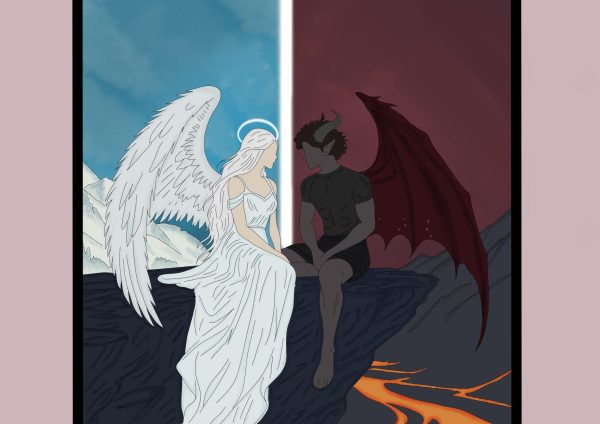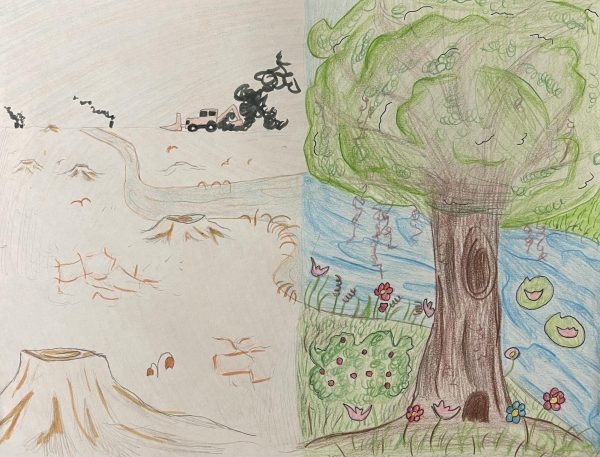Fifty Words for Rain: Book Review
 DISCLAIMER: This review speaks about graphic content that may not be suitable for all readers. It also includes spoilers for this book.
DISCLAIMER: This review speaks about graphic content that may not be suitable for all readers. It also includes spoilers for this book.
Fifty Words for Rain was written by Asha Lemmie, an American author born in Virginia and raised in Maryland. She published the book Fifty Words for Rain in September of last year.
The Title
雨のための50の言葉. Fifty Words for Rain. This is a common Japanese saying, due to the amount of rainfall Japan receives, as well the fact that there are about fifty different words that mean ‘rain’ in Japanese.
The title is relevant to the story because of the repetitive imagery of rain and its importance to the new-coming spring. It also is in line with the setting in the majority of the scenes.
The Setting
Fifty Words for Rain takes place in Japan, 1948, directly after WWII. The story starts with chemical treatment the main character is receiving to lighten her skin.
The main character, Noriko, begins detailing the events of her life; no matter how limited they are.
The Characters
There are many important characters, but the main character, Noriko, is who the narrative mainly follows.
Noriko is a young mixed race girl with conflicting feelings of loneliness and longing for her mother, who has gone missing since the peak of the war.
As you continue through the book, you are introduced to her grandmother, who is very traditional and enforces many rules. She causes a lot of emotional pain for Noriko.
Then, a gravitational, lovable character, Akira, is thrown into the mix. He is the sassy, first-born son and half-brother of Noriko. He sees her and instantly loves her, despite the difference between their skin.
Some other important characters include Akiko, the housemaid, Seiko, her mother, as well as her friend Miyuki, and William and Alice Stafford.
Plot
To begin, the book starts with a chemical treatment of her lightening her skin as per her abusive grandmother’s request. She narrates her life as a young girl, revealing that she was abandoned by her mother to her grandmother’s house, and has been locked away in the attic for as long as she has been living under her grandmother.
This detail is the first heartbreak in this absolutely heartbreaking book, but the streak continues when she discovers she has a brother. His name is Akira. She sees him and instantly forms a deep connection to him, and he has already had this sense due to his elder status to her. His need to support his family.
Akira is the heir to the family fortune. The grandmother wishes to dispose of Noriko, but Akira stands his ground, feeling highly protective over his little sister. They meet, and he learns just how terrible her treatment has been in the household, and demands privileges for her from his grandmother, threatening to not cooperate.
After many months of teaching Noriko of the real world, Noriko’s grandmother Yuko sells Nori off to a man who hosts prostitutes and human trafficking shows. This is where Madam Kiyomi is introduced, and she tells Noriko that she will be sold at 16 to a very wealthy bidder, because of her “exotic ethnicity.”
However, when she is 13, she is to be immediately sold as per the man’s request. Kiyomi objects, but honestly can’t do anything to prevent it. In this part of the story, there are lots of deep and twisting feelings that can rise. Noriko swears to Kiyomi that she won’t live as a pretty little slave, and decides to commit suicide. When the buyer collects her and leaves her alone in a room, she cuts her leg, but she doesn’t cut it deep enough.
Unexpectedly, her buyer rushes into the room where she remained, as he is revealed to be Akira who bought her. She survives and Akira promises to keep Noriko safe from the evils of her grandparents. As her life with Akira continues, he makes an announcement that he must leave for a music competition. He is an avid player of the violin.
When he returns, it is announced that guests will be living with them. Two cousins, William and Alice Stafford, of England. She continues on living, becoming close friends with Alice. She begins to develop romantic feelings for Will, which is upsetting for her because she is just 13 and he is much older.
The day she turns 14, he decides to take their encounter physical, and forces himself on her. She takes it, unable to react and unsure how to feel. She doesn’t wish to ruin the friendship between Will and Akira. This agony continues for two years, until she convinces him and Alice to leave. Shortly after, Akira announces that he will be off to Vienna to study with a master violinist.
She gets a request to play alongside an orchestra, as Noriko has studied under Akira on the violin. On the day of the concert, Noriko’s grandparents ordered an assassin to kill her, but Akira surprises Noriko by watching her performance. They are in a purposeful car crash, but she is badly injured and Akira dies.
Noriko cannot handle the pain. She forsakes Japan and goes on adventures around the world until she is 23. She meets up with Alice in England, who now has a family. There, she meets Noah, the music teacher of Alice’s children, and she falls in love and hates it. She refuses to admit her love for him, terrified of losing another love.
She and him decide to marry, though 3 weeks before the wedding she receives a letter that states that her grandmother has died and that she will inherit the estate. She returns to find her grandmother alive, who begs her to stay and become heir to the companies. She dreams of Akira, and although she is pregnant with Noah’s child, she decides to stay at the estate. This is when she learns that Akira’s death was an assassination attempt against her.
She births her child and swears to her grandmother that she will run the family and raise her child in her own way, and her grandmother’s heart breaks.
Conclusion
In conclusion, the book is very deep and speaks on many struggles she faces. It’s very dramatic, and if you’re into the soap opera historical drama style, then this is definitely for you. I thoroughly enjoyed this book and shed many tears over the wonderful imagery in the story. The writing style is poetic, as it navigates Noriko’s perspective. I highly recommend reading this story.

Renée LeCompte is a junior. She loves poetry, drawing, music, and short story writing.





